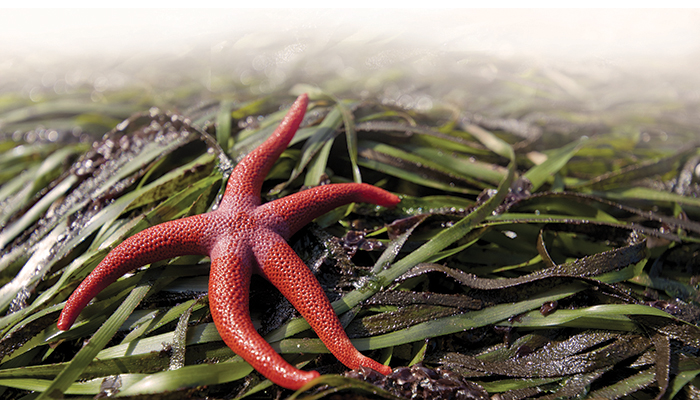Is Waste From Historic Sawmills Toxic to Native Eelgrass?
By Mackenzie Nelson
WSG Science Communications Fellow
By Mackenzie Nelson
WSG Science Communications Fellow
While sawmills no longer operate on the same scale, these relics of Washington’s history are still impacting local ecosystems today, including the health of
Zostera marina, an eelgrass species native to Washington waters. Eelgrass is well known as an indicator of ecosystem health in the Salish Sea (which includes both Washington’s Puget Sound and the inside waters off of Vancouver, British Columbia), but eelgrass is more prosperous in some areas than others. In 2016, with funding from Washington Sea Grant (WSG), researchers David Shull, Sylvia Yang and Mike Adamczyk from Western Washington University set out to understand why, with the hypothesis that higher concentrations of sulfide in the water is partly to blame for the reduction in eelgrass in some areas.
After they embarked on this project, the researchers began to wonder: could the higher levels of sulfide found in some areas be a legacy of Washington’s logging history? Historically, Washington’s sawmills released wood waste into the nearby Salish Sea. This rapid increase in organic matter fueled bacteria in the sediment to break down sulfate into hydrogen sulfide, making these locations sulfide-rich. “We thought perhaps sulfide, which is toxic to eelgrass and can occur in high concentrations in these areas, might be part of the story,” Shull says.
To study this effect, the researchers collected eelgrass from eight locations around Puget Sound and exposed them to varying levels of sulfides. Sulfide concentrations were manipulated in a number of ways, one of which included adding wood waste to the eelgrass tanks. “This mimicked places where there appears to be a strong effect of sulfide on eelgrass. This includes near historic pulp and paper mills, environments in which it’s apparent that eelgrass doesn’t grow very well,” Shull explains.
The research found high sulfide concentrations reduce Z. marina germination and growth when combined with additional stressors, such as low light and dissolved oxygen. This was especially prevalent at night when photosynthetic activity decreased. However, eelgrass from some locations, such as Dumas Bay, were more resilient to high sulfide concentrations.
In the field, the team also found a variable distribution of sulfide concentrations in the sediment surrounding the eelgrass plant. With varying sulfide concentrations, it became difficult to take consistent sulfide measurements using the traditional methods, so the research team created their own tool to accomplish the task: their solution was the diffusive gradient thin-film (DGT) sensor. They layered thin sheets of a special kind of gel on top of each other, “So that you have what almost looks like a TV screen,” Shull describes. Eventually, the result is a grey-scale gradient that gives an indication of the concentration of sulfide in the soil.
The results of this research could have important restoration implications; for example, the sulfide-resilient eelgrass from Dumas Bay holds promise to be successful stock to replant areas near historic sawmills. “Not all eelgrass populations are the same in the Salish Sea,” Yang says. Which is why WSG funded a new project this year to research the genetic population structure of eelgrass and to study and how distinct eelgrass populations respond to environmental stressors. Getting a better understanding of these site-to-site differences will help fine-tune future restoration efforts.
